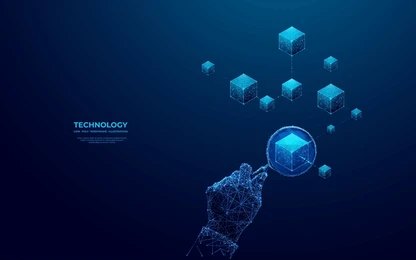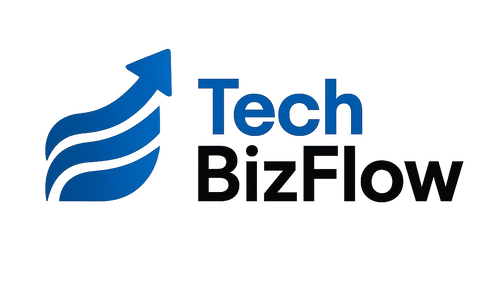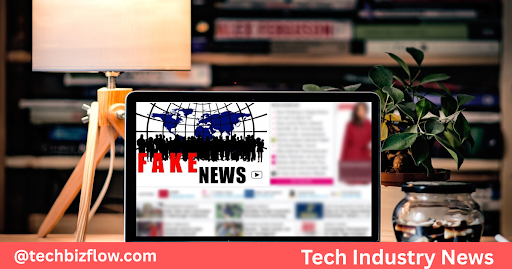A World in Shift
The tech world in 2025 is not reasonably evolving—it’s changing. Each day brings breakthroughs that reexamine how we work, communicate, and live.
For those who keep an eye on tech industry news, 2025 as of now feels like the future we once as it were envisioned.
But this future isn’t fair, almost favors gadgets, it’s around more intelligent frameworks, moral development, and a developing requirement for tech with real-world impact.
This article will walk you through the best tech patterns forming the future in 2025, from fake insights to green computing, from space tech to privacy-first stages.
Whether you’re a commerce pioneer, an engineer, or essentially a tech devotee, this is your guide to what’s next.
Artificial Intelligence Gets Personal and Ethical
AI Moves Beyond Automation
Artificial Insights in 2025 is less about supplanting people and more about improving our capabilities. AI devices are getting more relevant, sincerely mindful, and specialized.
We’re seeing AI being utilized in mental wellbeing bolster, personalized instruction, and indeed creativity, writing scripts, composing music, and producing visual art.
Ethics Take Center Stage
After a long time of wrangling, 2025 is the year when AI morals moves from broad discourses to difficult usage.
Governments and private companies are presently under pressure to demonstrate that their calculations are reasonable, fair-minded, and fair.
Tech industry news is filled with modern systems and AI administration models pointed at building open trust.
The Rise of Ambient Computing
Technology That Blends Into Life
Smart homes, wearables, and voice assistants are no longer novelties—they’re a part of everyday life.
But in 2025, encompassing computing takes this a step advance. Gadgets are presently connected without client input.
Envision strolling into a room and your lighting, temperature, and music settings alter based on your temperament and schedule.
Invisible Interfaces
Forget consoles and screens. Motion control, voice interaction, and indeed neural interfacing are getting to be standard.
Tech firms are testing with brain-computer interfacing that lets clients think with their thoughts. These aren’t science fiction anymore—they’re models in genuine use.
Quantum Computing’s Practical Debut
From Labs to the Real World
For decades, quantum computing felt like a far-off dream. But 2025 marks to beginning of a wave of down-to-earth utilization.
New businesses and huge firms are utilizing quantum calculations to fathom real-world problems—drug disclosure, supply chain optimization, and secure communications, to name a few.
Challenges Remain
Quantum computing still faces challenges: stability, taking a toll, and openness. But the pace of advancement is quick, and governments are contributing billions.
It’s not supplanting conventional computing, but complementing it in fathoming complex problems.
Web3 Finds Its Purpose

Beyond the Buzzwords
Web3 had its highs and lows, particularly in the cryptocurrency crash of the early 2020s. But in 2025, it’s no longer a buzzword.
Blockchain is being utilized in important ways: secure character verification, straightforward supply chains, and decentralized cloud storage.
User-Controlled Data
The greatest move? Control of individual information. Modern stages let clients claim their data, choose who gets to, and indeed get paid for sharing it. Tech industry news is filled with victory stories of new companies utilizing Web3 to make user-first products.
Climate Tech Becomes Core Tech
Green Is the New Standard
In 2025, supportability isn’t optional—it’s anticipated. Information centers are being updated to utilize less vitality. Chips are getting to be more effective. And modern materials are being utilized to decrease electronic waste.
Real-World Impact
One standout slant is that carbon capture innovation integrates into urban infrastructure. We’re also seeing a surge in electric flying and long-range solar-powered batteries.
Climate tech is no longer on the fringe—it’s front and center in each genuine tech conversation.
Cybersecurity Reinvented
The AI vs. AI Battlefield
Cybersecurity is entering an unprecedented time. In 2025, dangers are more progressed, frequently fueled by AI.
But defense instruments are as savvy. AI frameworks presently screen for designs, identify irregularities in real-time, and detect breaches; some time recently, they have spread.
Personal Cyber Defense
A developing number of apps offer cybersecurity at the personal level—think of them as antivirus for your advanced character.
These devices caution you when your information is compromised or when your key gadgets are being altered.
Edge Computing Powers Smarter Cities
Processing Data Closer to Home
Edge computing is becoming important as more gadgets interface with the web. Instead of sending all information to the cloud, gadgets handle it locally.
This diminishes slack and permits quicker responses, key for applications like autonomous cars, further surgeries, and real-time analytics.
Smart Infrastructure
Cities are presently prepared with edge-based tech: activity lights that adjust in real time, road cameras that distinguish peculiarities, and open transport frameworks that react to traveler stream. It’s effective, responsive, and data-driven.
Mixed Reality Merges with Daily Life
Virtual Reality Grows Up
In 2025, VR will not be fair for gaming. Modelers utilize it to walk clients through virtual buildings. Instructors utilize it to take students on authentic visits.
Specialists prepare utilizing reenacted situations that mirror real-life conditions.
Augmented Reality Goes Hands-Free
Smart glasses have at last ended up wearable, in vogue, and down-to-earth. They show relevant info—directions, interpretations, or errand reminders—without disturbing your sight.
It’s an unobtrusive, capable move in how we connect with the advanced world.
The Human-Tech Partnership
Co-Creation, Not Competition
We’re seeing a social move in 2025: tech isn’t seen as a danger, but as an accomplice. Specialists utilize AI to brainstorm.
Specialists utilize machine learning to capture uncommon maladies early. Agriculturists utilize rambles and sensors to screen crops.
Lifelong Learning with Tech
Education is presently a nonstop process. Stages utilize versatile learning to advance with users’ needs. And with so much alteration, upskilling is not a luxury—it’s a need. The best portion? Learning has become more intelligent, immersive, and engaging.
Satellites, Drones, and the Final Frontier
Space Tech Enters the Chat
Low Soil Circle (LEO) satellites are changing how we interface. In 2025, farther locales are getting solid web through obsequious systems.
In the interim, rambles are being utilized for therapeutic conveyances, crisis reconnaissance, and rural monitoring.
Space Isn’t Just for Superpowers
Thanks to brought down costs, smaller countries and private companies are propelling satellites and investigating lunar missions.
Tech industry news outlets presently cover space upgrades fair like climate forecasts.
Conclusion: Navigating the Future
Tech industry news in 2025 isn’t fair, almost quicker chips or shinier screens. It’s around significant advance. It’s around making apparatuses that make strides in life, ensure security, and regard humankind.
The most critical move happening nowadays is not a fair technological one, but a philosophical one.
As we step into modern times, one thing becomes clear: the future of tech has a place for those who construct with care, think long-term, and lead with values.
Let’s keep observing, building, and forming that future together.
FAQs
What is the biggest tech trend in 2025?
Artificial intelligence, personalization, and moral AI are driving patterns in 2025.
How is Web3 changing the tech landscape?
Web3 engages clients with control over their individual information and computerized identity.
Why is sustainability important in tech now?
Green innovation is fundamental as energy-efficient frameworks have become the industry standard.


